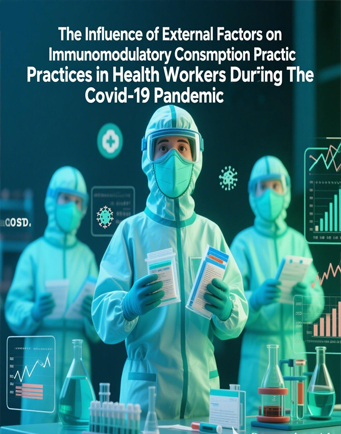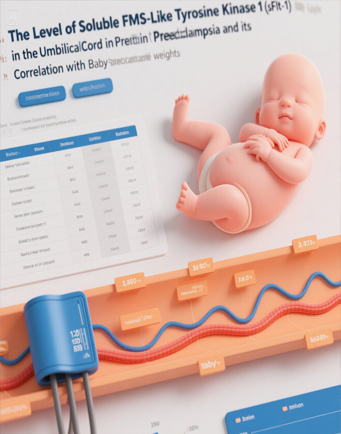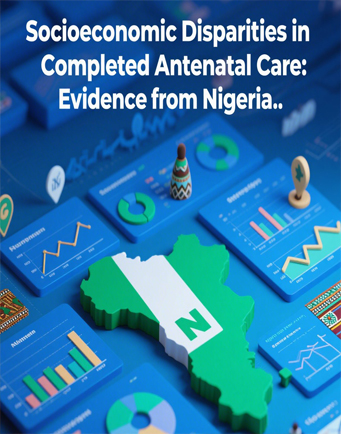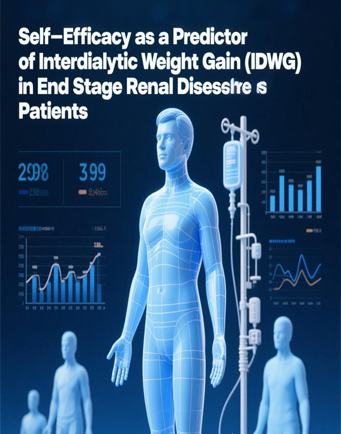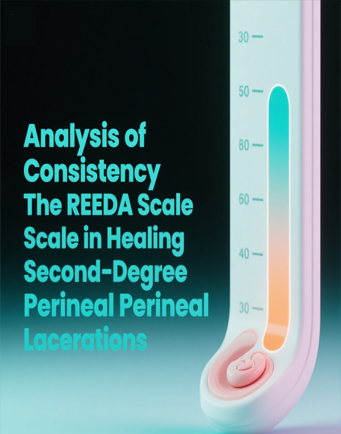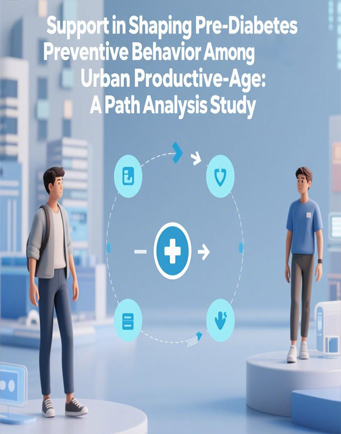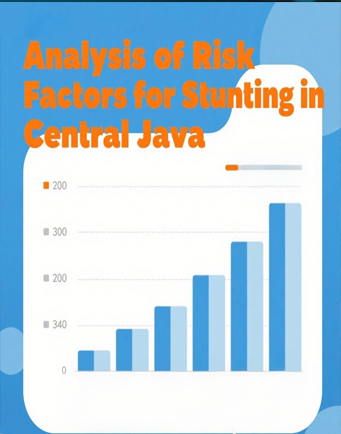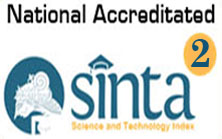Barrier from the Side of Stunting Management Policy in Rural Areas of Indonesia: A Qualitative Study
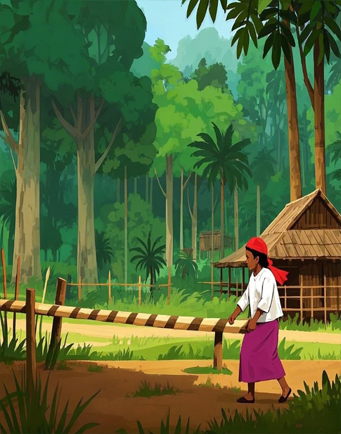
Downloads
This study examines the factors hindering effective stunting management in rural Indonesia, with a particular focus on government policy. Despite ongoing efforts, inadequate attention has been given to key policy-related challenges, including cross-sectoral coordination, merit-based recruitment, budget allocation, and community-based education. This study aims to identify policy barriers that hinder the implementation of stunting mitigation efforts in rural Indonesia. The method used A qualitative approach with a phenomenological design was employed. Data were collected through semi-structured interviews with 32 purposively selected participants, including regional and sub-district heads, village chiefs, health department leaders, and community health center directors, from January to August 2023. The results show that the analysis identified five primary barriers to stunting management: (1) Regulatory inconsistencies, including overlapping inter-agency guidelines that create ambiguity in implementation; (2) Human resource limitations, characterized by a shortage of skilled personnel and nepotistic recruitment practices; (3) Structural and institutional barriers, such as bureaucratic inefficiencies and inter-agency conflicts of interest; (4) Misallocated funding, driven by corruption and weak oversight, leading to ineffective budget distribution; and (5) Community-related factors, including poverty, low nutritional awareness, and unsupportive cultural practices. The conclusion is The conclusion is to addressing these barriers is essential for improving stunting management in rural Indonesia. Enhancing policy consistency, strengthening institutional frameworks, and improving resource allocation are key to overcoming existing challenges. The study recommends periodic regulatory evaluations, enhanced cross-sectoral coordination, and alignment of national policies with local needs. Establishing community-based recruitment and training systems through strategic partnerships could mitigate human resource constraints. Strengthening anti-corruption measures through independent oversight and digital reporting systems. Finally, fostering sustained community education through sociocultural approaches and local leader involvement is critical to increasing awareness and participation in stunting prevention efforts.
Afandi, M., Anomsari, E., Novira, A., & Sudartini, S. (2022). A Penta-Helix Approach to Collaborative Governance of Stunting Intervention in West Java Indonesia. Proceedings of the Third International Conference Administration Science, ICAS 2021. https://doi.org/10.4108/EAI.15-9-2021.2315238
Al Jawaldeh, A., Doggui, R., Borghi, E., Aguenaou, H., Ammari, L. E., Abul-Fadl, A., & McColl, K. (2020). Tackling childhood stunting in the Eastern Mediterranean Region in the context of COVID-19. Children, 7(11), 239. https://doi.org/10.3390/children7110239
Beal, T., Tumilowicz, A., Sutrisna, A., Izwardy, D., & Neufeld, L. M. (2018). A review of child stunting determinants in Indonesia. Maternal & child nutrition, 14(4), e12617. https://doi.org/10.1111/mcn.12617
Beatty, A., Borkum, E., Leith, W., Null, C., & Suriastini, W. (2024). A Cluster Randomized Controlled Trial of A Community-Based Initiative to Reduce Stunting in Rural Indonesia. Maternal & Child Nutrition, 20(1), e13593. https://doi.org/10.1111/mcn.13593
Belew, A. K., Worku, N., Gelaye, K. A., Gonete, K. A., Hunegnaw, M. T., Muhammad, E. A., Astael, T., Mitike, G., Lakew, A. M., & Abebe, Z. (2023). Functionality of Nutrition Steering and Technical Committees and Quality of Child Growth Monitoring Program in Northwest Ethiopia. Discover Food, 3(1), 1–10. https://doi.org/10.1007/s44187-023-00049-5
Bhattacharya, R., & Ravi, J. K. (2023). A Qualitative Evaluation of the Micro-level Barriers to Better Delivery and Utilisation of Nutrition Services in Rural India. Asia-Pacific Journal of Rural Development, 33(1), 7-32. https://doi.org/10.1177/10185291241235446
Bogin, B. (2022). Fear, Violence, Inequality, and Stunting in Guatemala. American Journal of Human Biology, 34(2), e23627. https://doi.org/10.1002/ajhb.23627
Braun, V., & Clarke, V. (2006). Using Thematic Analysis in Psychology. Qualitative Research in Psychology, 3(2), 77–101. https://doi.org/10.1191/1478088706qp063oa
Campos, P. A., & Reich, M. R. (2019). Political analysis for health policy implementation. Health Systems & Reform, 5(3), 224-235. https://doi.org/10.1080/23288604.2019.1625251
De Onis, M., Blössner, M., & Borghi, E. (2012). Prevalence and Trends of Stunting Among Pre-school Children, 1990–2020. Public Health Nutrition, 15(1), 142–148. https://doi.org/10.1017/S1368980011001315
Global Nutrition Report. (2020). Country Nutrition Profiles . Global Nutrition Report. Retrieved from: https://globalnutritionreport.org/resources/nutrition-profiles/asia/south-eastern-asia/
Grey, K., Gonzales, G. B., Abera, M., Lelijveld, N., Thompson, D., Berhane, M., Abdissa, A., Girma, T., & Kerac, M. (2021). Severe Malnutrition or Famine Exposure in Childhood and Cardiometabolic Non Communicable Disease Later in Life: A Systematic Review. BMJ Global Health, 6(3), 3161. https://doi.org/10.1136/BMJGH-2020-003161
Guillermo, M. S., & Guillermo, M. S. (2023). Perceptions on the Implementation of the Philippine Development Plan in Ensuring Efficient Governance. Open Journal of Leadership, 12(4), 375–399. https://doi.org/10.4236/OJL.2023.124018
Handryastuti, S., Pusponegoro, H. D., Nurdadi, S., Chandra, A., Pramita, F. A., Soebadi, A., Widjaja, I. R., & Rafli, A. (2022). Comparison of Cognitive Function in Children with Stunting and Children with Undernutrition with Normal Stature. Journal of Nutrition and Metabolism, 2022, 9775727. https://doi.org/10.1155/2022/9775727
Herawati, D. M. D., & Sunjaya, D. K. (2022). Implementation outcomes of national convergence action policy to accelerate stunting prevention and reduction at the local level in Indonesia: a qualitative study. International Journal of Environmental Research and Public Health, 19(20), 13591. https://doi.org/10.3390/ijerph192013591
Hermanussen, M., & Scheffler, C. (2024). Stop Stunting A Misguided Campaign by Well Meaning Nutritionists. American Journal of Human Biology, 36(8), e24068. https://doi.org/10.1002/ajhb.24068
Indartuti, E. (2022). Utilization of Village Funds in Improving the Economy of Village Communities. International Journal of Social Science and Business, 6(3), 343–349. https://doi.org/10.23887/ijssb.v6i3.49953
Iruhiriye, E., Frongillo, E. A., Olney, D. K., Niyongira, E., Nanama, S., Blake, C. E., Rwibasira, E., & Mbonyi, P. (2024). Understanding Differential Reductions in Undernutrition Among Districts in Rwanda through the Perspectives of Mid Level and Community Actors on Policy Commitment and Policy Coherence. Maternal & Child Nutrition, 20(3), e13640. https://doi.org/10.1111/mcn.13640
Kementerian Kesehatan Republik Indonesia. (2022). Buku Saku Hasil Survei Status Gizi Indonesia (SSGI) 2022. Jakarta: Kementerian Kesehatan Republik Indonesia.
Miranda, A. V., Sirmareza, T., Nugraha, R. R., Rastuti, M., Syahidi, H., Asmara, R., & Petersen, Z. (2023). Towards stunting eradication in Indonesia: Time to invest in community health workers. Public Health Challenges, 2(3), e108. https://doi.org/10.1002/puh2.108
Montenegro, C. R., Gomez, G., Hincapie, O., Dvoretskiy, S., DeWitt, T., Gracia, D., & Misas, J. D. (2022). The Pediatric Global Burden of Stunting: Focus on Latin America. Lifestyle Medicine, 3(3), e67. https://doi.org/10.1002/lim2.67
Mulyani, S., Soetrisno, Andayani, T. R., & Perestroika, G. D. (2023). Factors Affecting Village Apparatus, Integrated Service Post and Early Childhood Education in Stunting Prevention. Ethiopian Journal of Health Sciences, 33(2), 237. https://doi.org/10.4314/ejhs.v33i2.8
Niga, J. D. (2023). Collaborative Governance in an Effort to Reduce Stunting Rate in TTS District, NTT Province. International Journal of Social Service and Research, 3(4), 1060–1067. https://doi.org/10.46799/ijssr.v3i4.355
Palutturi, S., Syam, A., Asnawi, A., & Hamzah. (2020). Stunting in a Political Context: A Systematic Review. Enfermería Clínica, 30, 95–98. https://doi.org/10.1016/j.enfcli.2019.10.049
Prasetyo, A., Noviana, N., Rosdiana, W., Anwar, M. A., Harwijayanti, B. P., & Fahlevi, M. (2023). Stunting convergence management framework through system integration based on regional service governance. Sustainability, 15(3), 1821. https://doi.org/10.3390/su15031821
Rahman, M. A., Halder, H. R., Rahman, M. S., & Parvez, M. (2021). Poverty and childhood malnutrition: Evidence-based on a nationally representative survey of Bangladesh. PLoS One, 16(8), e0256235. https://doi.org/10.1371/journal.pone.0256235
Santinha, G., Fernandes, A., Oliveira, R., & Rocha, N. P. (2023). Designing a health strategy at local level: A conceptual framework for local governments. International Journal of Environmental Research and Public Health, 20(13), 6250. https://doi.org/10.3390/ijerph20136250
Saputri, R. A., & Tumangger, J. (2019). Stunting Management Policy in Indonesia. Journal of Political Issues, 1(1), 1–9. https://doi.org/10.33019/jpi.v1i1.2
Soliman, A., De Sanctis, V., Alaaraj, N., Ahmed, S., Alyafei, F., Hamed, N., & Soliman, N. (2021). Early and Long-term Consequences of Nutritional Stunting: From Childhood to Adulthood. Acta Bio Medica : Atenei Parmensis, 92(1), 2021168. https://doi.org/10.23750/abm.v92i1.11346
Soviyati, E., Sulaeman, E. S., Sugihardjo, I., & Wiboworini, B. (2023). Effect of Applying the Health Promotion Model in Stunting Prevention and Behavior Control in Indonesia. Journal of Education and Health Promotion, 12(1), 227. https://doi.org/10.4103/jehp.jehp_276_23
Syafrawati, S., Lipoeto, N. I., Masrul, M., Novianti, N., Gusnedi, G., Susilowati, A., ... & Umar, H. B. (2023). Factors driving and inhibiting stunting reduction acceleration programs at district level: A qualitative study in West Sumatra. Plos One, 18(3), e0283739. https://doi.org/10.1371/journal.pone.0283739
Trivedi, M., Patel, M., Divya Nair, H., & Sharma, B. (2022). Evaluation of Community Bbased Participatory Governance Interventions to Improve Access to Health Related Public Entitlements in India. International Journal of Health Governance, 27(3), 296–311. https://doi.org/10.1108/ijhg-03-2022-0030
Vaivada, T., Akseer, N., Akseer, S., Somaskandan, A., Stefopulos, M., & Bhutta, Z. A. (2020). Stunting in Childhood: An Overview of Global Burden, Trends, Determinants, and Drivers of Decline. The American Journal of Clinical Nutrition, 112(Suppl 2), 777S. https://doi.org/10.1093/ajcn/nqaa159
Wiliyanarti, P. F., Wulandari, Y., & Nasrullah, D. (2022). Behavior in fulfilling nutritional needs for Indonesian children with stunting: Related culture, family support, and mother’s knowledge. Journal of Public Health Research, 11(4). https://doi.org/10.1177/22799036221139938
World Health Organization. (2020). Joint Child Malnutrition Estimates. World Health Organization. Retrieved from: https://www.who.int/data/gho/data/themes/topics/joint-child-malnutrition-estimates-unicef-who-wb
World Health Organization. (2022). Malnutrition. World Health Organization. Retrieved from: https://www.who.int/health-topics/malnutrition#tab=tab_1
Yani, D. I., Rahayuwati, L., Sari, C. W. M., Komariah, M., & Fauziah, S. R. (2023). Family Household Characteristics and Stunting: An Update Scoping Review. Nutrients, 15(1), 233. https://doi.org/10.3390/NU15010233
Zai, Z., Girsang, E., & Nasution, S. L. R. (2023). The Evaluation of Implementation of the Stunting Reduction Program. AIP Conference Proceedings, 2722(1), 080019. https://doi.org/10.1063/5.0144397
Copyright (c) 2025 JURNAL INFO KESEHATAN

This work is licensed under a Creative Commons Attribution-NonCommercial-ShareAlike 4.0 International License.
Copyright notice
Ownership of copyright
The copyright in this website and the material on this website (including without limitation the text, computer code, artwork, photographs, images, music, audio material, video material and audio-visual material on this website) is owned by JURNAL INFO KESEHATAN and its licensors.
Copyright license
JURNAL INFO KESEHATAN grants to you a worldwide non-exclusive royalty-free revocable license to:
- view this website and the material on this website on a computer or mobile device via a web browser;
- copy and store this website and the material on this website in your web browser cache memory; and
- print pages from this website for your use.
- All articles published by JURNAL INFO KESEHATAN are licensed under the Creative Commons Attribution 4.0 International License. This permits anyone to copy, redistribute, remix, transmit and adapt the work provided the original work and source is appropriately cited.
JURNAL INFO KESEHATAN does not grant you any other rights in relation to this website or the material on this website. In other words, all other rights are reserved.
For the avoidance of doubt, you must not adapt, edit, change, transform, publish, republish, distribute, redistribute, broadcast, rebroadcast or show or play in public this website or the material on this website (in any form or media) without appropriately and conspicuously citing the original work and source or JURNAL INFO KESEHATAN prior written permission.
Permissions
You may request permission to use the copyright materials on this website by writing to jurnalinfokesehatan@gmail.com.
Enforcement of copyright
JURNAL INFO KESEHATAN takes the protection of its copyright very seriously.
If JURNAL INFO KESEHATAN discovers that you have used its copyright materials in contravention of the license above, JURNAL INFO KESEHATAN may bring legal proceedings against you seeking monetary damages and an injunction to stop you using those materials. You could also be ordered to pay legal costs.
If you become aware of any use of JURNAL INFO KESEHATAN copyright materials that contravenes or may contravene the license above, please report this by email to jurnalinfokesehatan@gmail.com
Infringing material
If you become aware of any material on the website that you believe infringes your or any other person's copyright, please report this by email to jurnalinfokesehatan@gmail.com.


